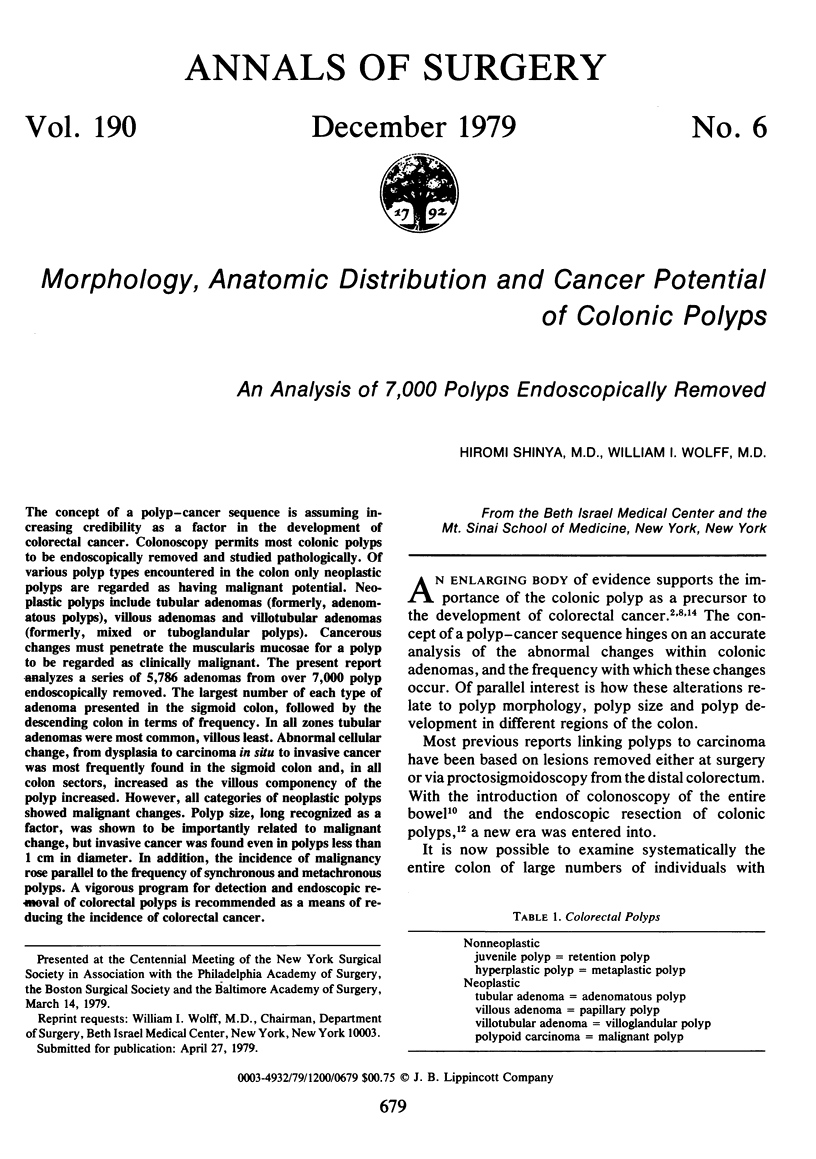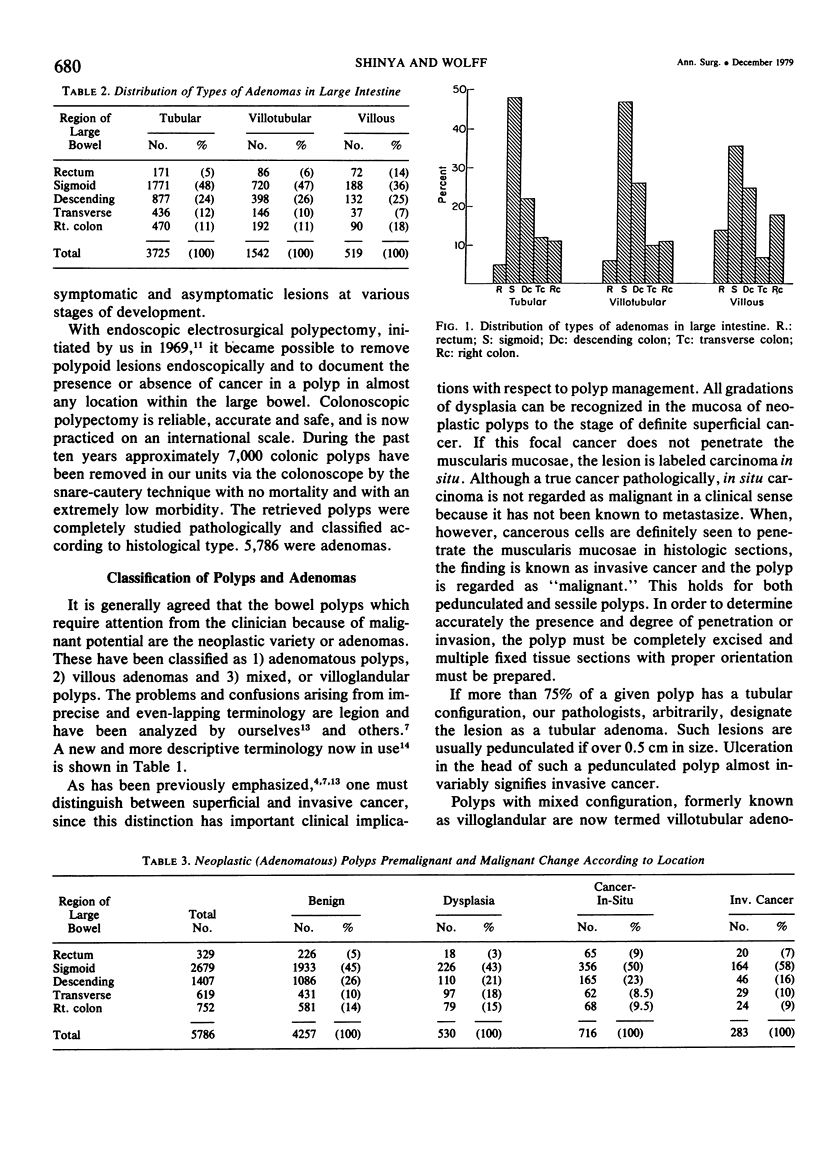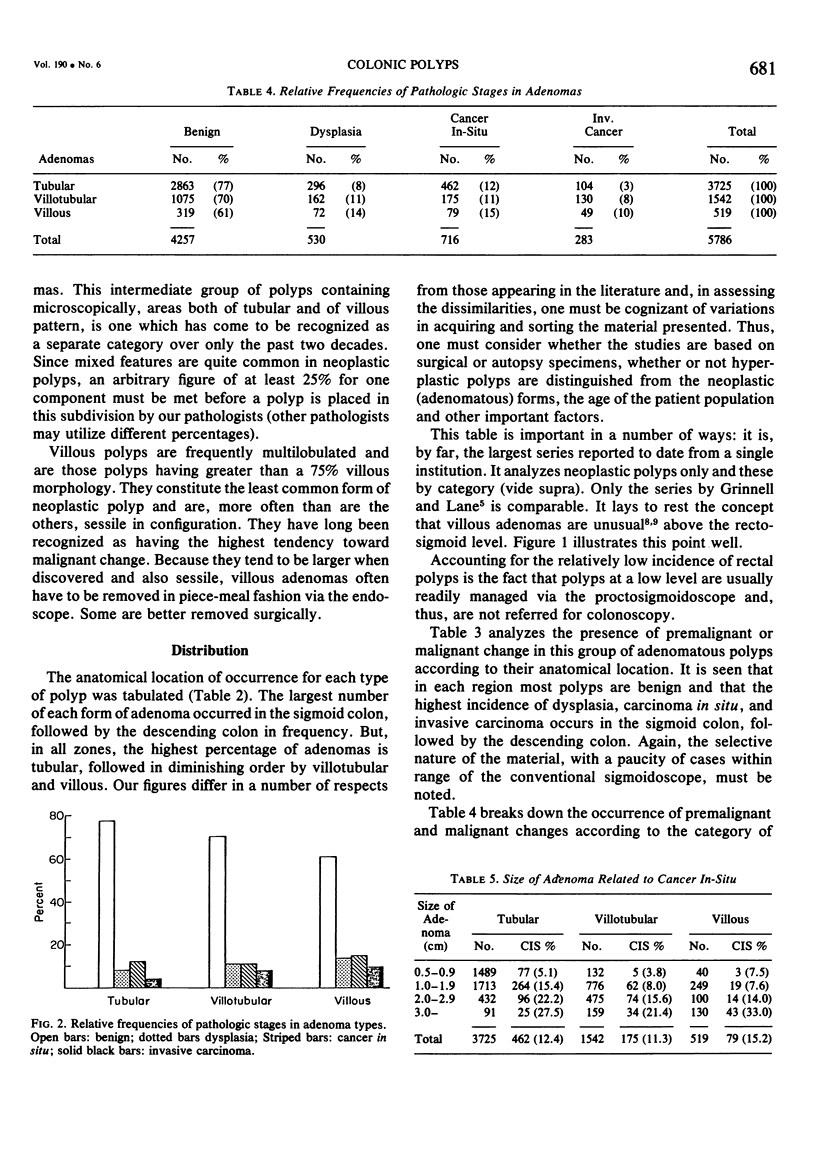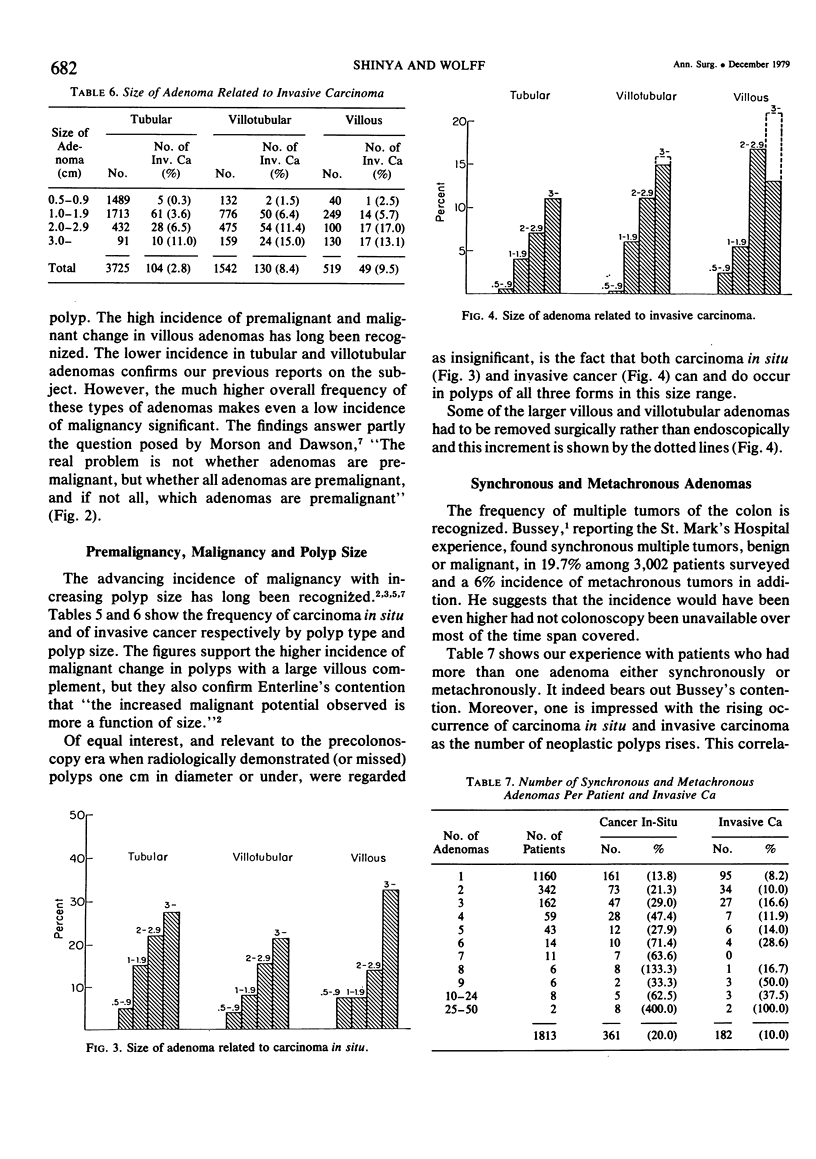Abstract
The concept of a polyp-cancer sequence is assuming increasing credibility as a factor in the development of colorectal cancer. Colonoscopy permits most colonic polyps to be endoscopically removed and studied pathologically. Of various polyp types encountered in the colon only neoplastic polyps are regarded as having malignant potential. Neoplastic polyps include tubular adenomas (formerly, adenomatous polyps), villous adenomas and villotubular adenomas (formerly, mixed or tuboglandular polyps). Cancerous changes must penetrate the muscularis mucosae for a polyp to be regarded as clinically malignant. The present report analyzes a series of 5,786 adenomas from over 7,000 polyp endoscopically removed. The largest number of each type of adenoma presented in the sigmoid colon, followed by the descending colon in terms of frequency. In all zones tubular adenomas were most common, villous least. Abnormal cellular change, from dysplasia to carcinoma in situ to invasive cancer was most frequently found in the sigmoid colon and, in all colon sectors, increased as the villous componency of the polyp increased. However, all categories of neoplastic polyps showed malignant changes. Polyp size, long recognized as a factor, was shown to be importantly related to malignant change, but invasive cancer was found even in polyps less than 1 cm in diameter. In addition, the incidence of malignancy rose parallel to the frequency of synchronous and metachronous polyps. A vigorous program for detection and endoscopic removal of colorectal polyps is recommended as a means of reducing the incidence of colorectal cancer.
Full text
PDF




Selected References
These references are in PubMed. This may not be the complete list of references from this article.
- ENTERLINE H. T., EVANS G. W., MERCUDO-LUGO R., MILLER L., FITTS W. T., Jr Malignant potential of adenomas of colon and rectum. JAMA. 1962 Feb 3;179:322–330. doi: 10.1001/jama.1962.03050050012003. [DOI] [PubMed] [Google Scholar]
- Fenoglio C. M., Lane N. The anatomical precursor of colorectal carcinoma. Cancer. 1974 Sep;34(3):suppl–suppl:823. doi: 10.1002/1097-0142(197409)34:3+<819::aid-cncr2820340706>3.0.co;2-s. [DOI] [PubMed] [Google Scholar]
- GRINNELL R. S., LANE N. Benign and malignant adenomatous polyps and papillary adenomas of the colon and rectum; an analysis of 1,856 tumors in 1,335 patients. Int Abstr Surg. 1958 Jun;106(6):519–538. [PubMed] [Google Scholar]
- Olson R. O., Jr, Davis W. C. Villous adenomas of the colon, benign or malignant? Arch Surg. 1969 Apr;98(4):487–492. doi: 10.1001/archsurg.1969.01340100119016. [DOI] [PubMed] [Google Scholar]
- SPRATT J. S., Jr, ACKERMAN L. V., MOYER C. A. Relationship of polyps of the colon to colonic cancer. Ann Surg. 1958 Oct;148(4):682–698. doi: 10.1097/00000658-195810000-00014. [DOI] [PMC free article] [PubMed] [Google Scholar]
- Wolff W. I., Shinya H. Colonofiberoscopy. JAMA. 1971 Sep 13;217(11):1509–1512. [PubMed] [Google Scholar]
- Wolff W. I., Shinya H. Definitive treatment of "malignant" polyps of the colon. Ann Surg. 1975 Oct;182(4):516–525. doi: 10.1097/00000658-197510000-00018. [DOI] [PMC free article] [PubMed] [Google Scholar]
- Wolff W. I., Shinya H. Polypectomy via the fiberoptic colonoscope. Removal of neoplasms beyond reach of the sigmoidoscope. N Engl J Med. 1973 Feb 15;288(7):329–332. doi: 10.1056/NEJM197302152880701. [DOI] [PubMed] [Google Scholar]


